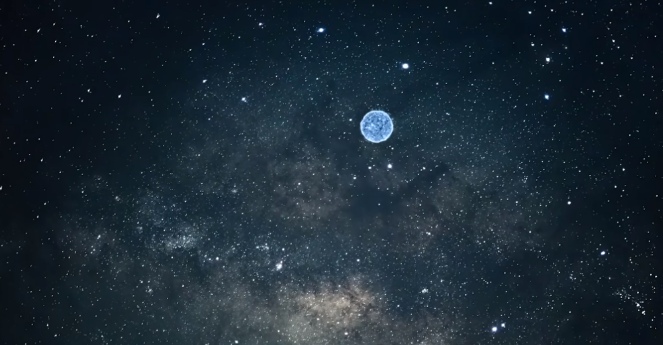Andromeda will collide with the Milky Way galaxy in 4 billion years, which is almost a foregone conclusion. But more worryingly, scientists have discovered a wandering star heading straight for our solar system. If the two stars collided, it could mean the end of all life on Earth.
Wandering stars, as the name suggests, they wander through space, they don't reside anywhere, they don't belong to any particular galaxy. Or they were, and were just ejected from the system at some point by a supernova or two galaxies crashing into each other. Whatever caused these stars to hurl away under the gravitational pull of the primordial galaxy, they would have been shot out at very high speeds. Why?
Quite simply, for example, in order to escape our own Milky Way galaxy, a star would need to travel at 550 kilometers per second to escape its massive gravitational pull. Fortunately, our sun is only moving at 200 kilometers per second, not fast enough to be a wandering star. But these wandering stars aren't uncommon -- they may even make up half of the 2,000 trillion stars in the universe -- and scientists have found that one of them may be headed toward our sun 39bet-đua chó-game giải trí -đá gà-đá gà trực tuyến-đánh bài.
The orbit of the star, which scientists call Gliese 710, will approach our solar system in about 1.3 million years. When the Gliese 710 finally reaches us, it will enter the Oort Cloud, the outermost part of our solar system, at about 51,500 kilometers per hour. Once it reaches Neptune, the countdown to the epic collision will begin, and it will be 10 years before it hits the sun. At that time, humans had better prepare for the coming end of the world and plan their final life. Of course, 1.3 million years later, the presence and absence of humans may be a question.
In short, the gravitational pull of Gliese 710 would disrupt the orbits of our planetary neighbors, causing the planets to collapse in stability and eventually shift. This could push Earth out of the habitable zone. Or it could turn us into a rogue planet after inadvertently catapulting us out of the solar system. Of course, the more curious question is, what will Gliese 710's collision with the Sun look like ten years from now?
In short, things will only get worse as time goes on.
One possibility is that the Sun and Gliese 710 will merge into a red nova, which would cause a violent explosion that would emit nearly half a million times more light than the sun currently emits. Given the time it takes light to travel from the sun to Earth, you could be completely unaware of the devastating explosion for eight minutes. But when humans find all that light, they could go blind in a millisecond, and then instantly put them on the spot. That's because behind that dazzling light will be ultra-hot gas, a heat wave that could be powerful enough to destroy almost everything in its path.
 Starting with Mercury, then Venus, then Earth, our atmosphere and oceans would be wiped out, turning our planet into a barren rock. The explosion will also produce a flood of high-energy neutrinos, which will heat plants and animals to annihilation. The Earth would also be blanched with deadly ultraviolet and gamma radiation, and even if humans managed to survive the blast, they wouldn't survive the harmful effects of all this radiation for very long, damaging their eyes, skin and even DNA.
Starting with Mercury, then Venus, then Earth, our atmosphere and oceans would be wiped out, turning our planet into a barren rock. The explosion will also produce a flood of high-energy neutrinos, which will heat plants and animals to annihilation. The Earth would also be blanched with deadly ultraviolet and gamma radiation, and even if humans managed to survive the blast, they wouldn't survive the harmful effects of all this radiation for very long, damaging their eyes, skin and even DNA.
And now, if an alien species looked at all this from a distant galaxy with a powerful telescope, they would see a bright star surrounded by an excess of red gas, leaving infrared light visible after the explosion for a long time. But this is not the only way out of all this. There is a more peaceful alternative.
If the two stars move a little slower relative to each other, they could eventually merge into a giant new star as they orbit each other. Our sun will strip mass from its smaller companion, Gliese 710, and eventually swallow it. This extremely hot and bright star would then be called a blue giant. While this may sound many times more peaceful, this option could still mean the end of life on Earth. Since our Sun is now a big blue star, the habitable zone of our solar system will be pushed even further back.
Of course, right now this star is just heading our way, and the gravitational tug of other galaxies may change its direction, so do you think when this star will hits our solar system?